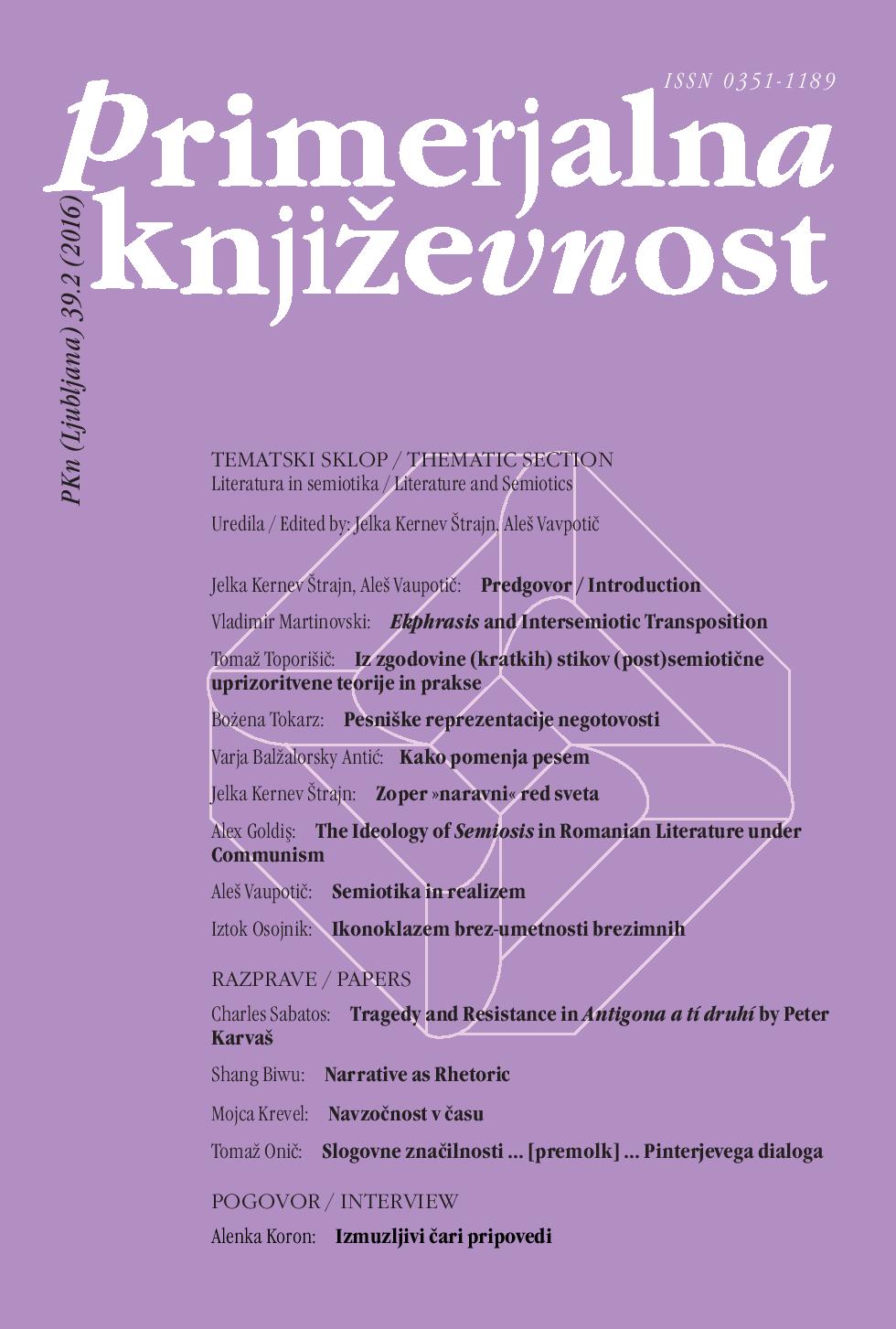Against the “Natural” Order of the World
Keywords:
philosophy of language, sign, representation, Deleuze, Gilles, Guattari, Félix, Polish literature, Tokarczuk, Olga, English poetry, Blake, William, man and animal, non-anthropocentrismAbstract
Along the many conceptualizations and definitions of the sign offered by the history of semiotics this article selects as its point of departure the Proustian definition, whereby the sign is what forces us into thinking. However, this thinking no longer makes an effort to find the truth, but creates the circumstances where thinking may seek the truth or, in other words, establishes the relationship with the still-unsought and reveals the truth in incommensurability. This is because – as Gilles Deleuze and Félix Guattari assert in their work What Is Philosophy? – the true criterion of thinking is novelty; namely, to think means to think differently; moreover, it is only possible to think differently. This recognition places us precisely at the crux of their late philosophical thought through the prism that we will use to read the genre novel (a kind of “moral and metaphysical thriller” as the author herself defined it) Prowadź swój pług przez kości umarłych (Drive your Plough over the Bones of Dead, 2009; the title is a paraphrase of the verse from William Blake’s “Proverbs of Hell”), written by Olga Tokarczuk – who, among other things, won the Vilenica Prize in 2013. However, this reading will not take place as an application of Deleuze’s reading of Proust, known from the work Proust and Signs, even though this will be taken into account. The article first of all seeks to determine which of Deleuze and Guattari’s basic concepts, above all becoming (becoming-animal, becoming-minoritarian, becoming-imperceptible) are key for reflecting on the thematization of animals in literature, and on this basis to show that it is precisely the issue of thematizing animals that is fatefully connected with contesting the orientation that subordinates heterogeneity to a single homogenizing concept and makes it possible for generally known accepted ideas to continually succeed in becoming rooted in consciousness. Yet such an orientation requires attentiveness, particularly to the part of the sign that is more accessible to perception than to reason. In this context, distinguishing between reason and perception is vitally important for the reading of Tokarczuk’s novel. It is precisely in this sense that it is possible to understand the fact why the poetical “composite” art of William Blake is the most important intertextual element in the novel.References
Benčin, Rok. Okna brez monad. Estetika od Heideggerja do Rancièra. Ljubljana: Filozofski inštitut ZRC SAZU, 2015.
Benjamin, Walter. »Ursprung des deutschen Trauerspiels«. V: Walter Benjamin: Gesammelte Schriften. I. Frankfurt ob Majni: Suhrkamp, 1991. 203–409.
Blake, William. The Complete Poetry and Prose of William Blake. New York: Random House, 1988.
– – –. Poroka nebes in pekla. Prev. Vojko Gorjan. Koper: Hyperion, 2006.
– – –. Blake. Prev. Miha Avanzo. Ljubljana: MK, 1978.
Deleuze, Gilles. Francis Bacon. Logique de la sensation. Pariz: La Différence, 1984.
– – –. Proust in znaki. Prev. Jana Pavlič. Ljubljana: Študentska založba, 2012.
– – –. Kritika in klinika. Prev. Suzana Koncut. Ljubljana: Študentska založba, 2010.
– – –. Nietzsche. Prev. Jelka Kernev Štrajn. Vnanje Gorice: KUD Police Dubove, 2014.
– – –. Razlika in ponavljanje. Prev. Peter Klepec et al. Ljubljana: Filozofski inštitut ZRC SAZU, 2011.
– – –. Guba. Prev. Jana Pavlič. Ljubljana: Študentska založba, 2009.
Deleuze, Gilles in Félix Guattari. Kafka: za manjšinsko književnost. Prev. Vera Troha. Ljubljana: LUD Literatura, 1995.
– – –. Kaj je filozofija? Prev. Stojan Pelko. Ljubljana: Študentska založba 1999.
– – –. Mille plateaux. Pariz: Les Éditions de Minuits, 1980.
Heymans, Peter. »Eating Girls: Deleuze and Guattari’s Becoming-Animal and the Romantic Sublime in William Blake’s Lyca Poems«. Humanimalia: A Journal of Human/Animal Interface Studies 3.1 (jesen 2011): 2–39.
Kernev Štrajn, Jelka. Renesansa alegorije: alegorija, simbol, fragment. Ljubljana: ZRC SAZU, 2009.
Mitchell, W. J. T. Blake’s Composite Art. Princeton: Princeton University Press, 1978.
– – –. Slikovna teorija. Eseji o verbalni in vizualni reprezentaciji. Prev. Lela B. Njatin. Ljubljana: Študentska založba, 2009.
Peat, Ray. »Can Art Instruct Science? William Blake as Biological Visionary«. Splet. 23. 1. 2016. http://raypeat.com/articles/articles/william-blake.shtml.
Proust, Marcel. Sodoma in Gomora. Prev. Radojka Vrančič. Ljubljana: DZS, 1991.
Tokarczuk, Olga. Dnevna hiša, nočna hiša. Prev. Jana Unuk. Ljubljana: KUD Apokalipsa, 2005.
– – –. Beguni. Prev. Jana Unuk. Ljubljana: Modrijan, 2008.
– – –. Pelji svoj plug čez kosti mrtvih. Prev. Jana Unuk. Ljubljana: CZ, 2014.
Sasso, Robert, in Arnaud Villani. Le Vocabulaire de Gilles Deleuze. Pariz: J. Vrin, 2003.
Vaupotič, Aleš. Aktualnost realističnega diskurza v literarni in intermedijski umetnosti: doktorsko delo. Ljubljana: FF, 2010 (258).


